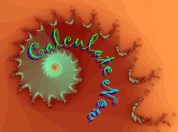
|
Enquiries: contactATarmidaleDOTinfo
Volume Conversions
There are many different ways you can use the Volume Conversion Calculator below. If you think it may be able to calculate something to do with volume, it probably can - give it a go. Here are some suggestions on the types of problems it can solve:
-
How many teaspoons are there in a fluid ounce?
-
You buy 1 quart of milk, a litre or yoghurt and a 5 fluid ounces of flavouring. What volume do they occupy?
-
How many gallon buckets will it take to fill your 20 cubic metre swimming pool?
-
A recipe calls for 2 cups of milk and all your measuring cups are in millilitres. How many millilitres do you need?
This Volume Conversion Calculator will help you convert metric measures to imperial measures. It will convert both to cooking measures and it similarly it will convert cooking to imperial and to to metric measures. This conversion calculator will also convert volume measures within metric, imperial and cooking.
See below for further instructions on how to get the most out of the Volume Conversion Calculator - especially related to how to enter numbers.
There are a few things to be careful of -
-
don't enter anything except numbers and a single decimal point - The program is good at finding numbers amongst other stuff, however, it can be confusing if you put commas in your numbers because whilst you might think they are part of a number, the calculator doesn't
-
the program is highly accurate in percentage terms but not in absolute terms. Therefore, if you are using lots of significant places the last places are likely to be incorrect but the size of the error will be a small portion of the whole number.
-
be wary of very large numbers because numbers that are too big for the place the computer provides, are not reported, you just get incorrect or silly results.